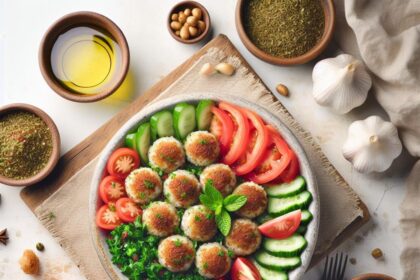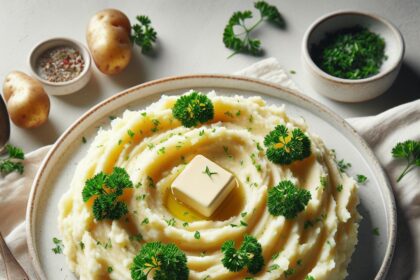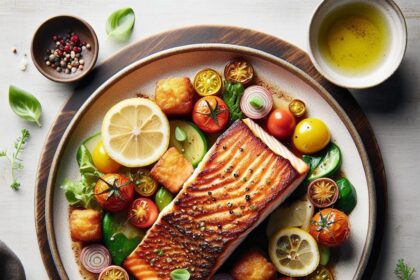In a world where freshness is king and spills are the ultimate nemesis, the humble lid wields more power than we often give it credit for. Whether you’re tucking away last night’s leftovers, preserving the crispness of your morning snack, or safeguarding precious homemade concoctions, the question looms large: Snap-on or screw-on? These two lid champions each promise the perfect seal, but which truly locks in flavor and locks out chaos? Join us as we pop the top and twist the truth, diving deep into the mechanics, convenience, and reliability of snap-on versus screw-on lids. Your storage game-and your peace of mind-may never be the same.
Snap-On vs Screw-On Lids: Which Seals Your World Best?
Choosing the right lid for your kitchen essentials isn’t just about a tight fit-it’s about understanding how snap-on vs screw-on lids: which seals your world best can revolutionize your food storage, freshness retention, and everyday convenience. From home cooks preserving vibrant sauces to busy families keeping snacks fresh, knowing the mechanics and materials behind these lids transforms your storage game.
Prep and Cook Time
- Research & Selection: 15 minutes
- Practical Testing and Usage: Ongoing daily
Yield
Endless confidence in preserving your ingredients and leftovers with an airtight, durable seal every time.
Difficulty Level
Easy – Understanding lid choice is about observation and matching your lifestyle needs.
Ingredients
- Snap-On Lid – Typically thin plastic or silicone edge designed for quick sealing.
- Screw-On Lid – Usually thicker plastic or metal with threaded sides for twisting onto containers.
- Glass or Plastic Container – The vessel to pair your lid with, affecting airtightness.
- Cleaning Supplies – Mild detergent and soft cloth for maintenance.
- Optional: Silicone Gaskets – For enhanced seal in screw-on lids.
Exploring the Mechanics Behind Snap-On and Screw-On Lids
Snap-on lids offer swift access with a simple press-fit design, relying heavily on precision-molded edges for a secure seal. Their efficiency stems from the elasticity of materials like silicone and thin plastics that “snap” tightly onto container rims. This mechanism makes them ideal for frequent use when speed matters. In contrast, screw-on lids deliver a robust locking system by twisting the threaded lid around matching grooves on the container, creating an often superior airtight barrier that is excellent for travel or long-term storage.
Material Matters: How Construction Influences Durability and Airtightness
The composition of your lid drastically affects performance. Snap-on lids are usually crafted from flexible plastics or silicone which provide a gentle but resilient grip, though they may wear or warp under extreme temperatures. Screw-on lids often incorporate harder plastics or metal, ensuring structural integrity under pressure and repeated use. Adding a silicone gasket to a screw-on lid can further improve airtightness by sealing microscopic gaps, ideal for liquids or pickled goods. Understanding these material nuances helps you pick a lid that stands the test of time and temperature.
Everyday Use and Convenience: Matching Lid Types to Your Lifestyle Needs
For those hustling through busy routines, a snap-on lid offers speed and convenience, perfect for snacks, quick meal prep, or fridge storage. Their light weight and ease of use make them kid-friendly and well suited to casual storage. Screw-on lids shine in scenarios demanding superior security-think outdoor picnics, airtight vacuum sealing, and durable lunch containers. When portability or airtight preservation is paramount, screw-ons close the gap with a twist.
Expert Tips for Maximizing Seal Performance and Longevity
- Keep the rims clean: Tiny crumbs or dried spills compromise seal efficiency for both lid types.
- Don’t over-tighten screw-on lids: Excessive force can warp threads or break seals.
- Replace worn gaskets promptly: Silicone rings on screw-on lids degrade and hinder airtightness.
- Store lids off containers when possible: Snap-on seals maintain shape better when not under constant stress.
- Regularly inspect for cracks: Especially in snap-on lids, as microfractures cause leaks.
Chef’s Notes
Experiment with combining lids and containers: sometimes a screw-on lid designed for glass jars can fit plastic containers, offering surprising durability and airtightness. If you’re freezing foods, screw-on lids with gaskets are typically better at preventing freezer burn. Conversely, snap-on lids can be safely microwaved with foods since they are often made from flexible materials. Always confirm manufacturer heat resistance before microwaving to avoid damage.
Serving Suggestions
Storing vibrant pickled vegetables? Use screw-on lids with silicone gaskets to guarantee freshness and prevent spills during transport. For quick serving and snacking, store colorful chopped fruits under snap-on lids that open easily for little hands. Consider matching lids and containers in clear materials to show off your beautiful culinary creations, garnishing top salads or desserts stored beneath with edible flowers or fresh herbs visible through the airtight seal.

| Feature | Snap-On Lid | Screw-On Lid |
|---|---|---|
| Seal Type | Press fit | Threaded twist |
| Material | Plastic, silicone | Plastic, metal + gasket |
| Durability | Medium, prone to warping | High, long-lasting |
| Airtightness | Good | Excellent with gasket |
| Convenience | Fast, easy access | Secure, leak-proof |
Looking to expand your kitchen organization? Check out our complete guide to kitchen storage essentials for more expert insights. For scientific insights on sealing technologies, visit ScienceDirect.
Q&A
Q&A: Snap-On vs Screw-On Lids – Which Seals Your World Best?
Q1: What’s the fundamental difference between snap-on and screw-on lids?
A1: Snap-on lids fasten by snapping onto the container’s rim, creating a quick, often airtight seal with a satisfying “click.” Screw-on lids twist onto threads, allowing you to tighten the seal securely by turning the lid until snug. Essentially, snap-on lids offer speed and convenience, while screw-on lids provide adjustable security.
Q2: Which lid type offers a better airtight seal?
A2: Screw-on lids generally win the airtight battle. Their threaded design lets you twist the lid tight enough to lock out air and moisture, making them ideal for long-term storage. Snap-on lids can be quite effective but sometimes rely on perfect rim alignment and material flexibility, which might not always guarantee a perfect seal.
Q3: Are snap-on lids more prone to leaks than screw-on lids?
A3: Often, yes. Because snap-on lids simply snap into place, vigorous shaking or tilting might pop the seal loose, causing leaks. Screw-on lids, tightened firmly, tend to stay put even under pressure, reducing the risk of spills and leaks.
Q4: How do convenience and speed compare between the two lid types?
A4: Snap-on lids shine in the convenience arena. A quick press seals your container in seconds-no twisting, no struggling with threads. Screw-on lids take a bit more time as you have to align and twist, but that extra effort pays off in reliability.
Q5: Which lid is better suited for reusable food storage?
A5: Screw-on lids are typically preferred for reusable food containers because they create a tighter seal that maintains freshness longer. However, snap-on lids are great for snacks or short-term storage when you need quick sealing and easy reopening.
Q6: Do snap-on or screw-on lids fare better in terms of durability?
A6: Screw-on lids often have the edge since the threading mechanism is less prone to wear compared to the flexible edges of snap-on lids, which can warp or lose their snap ability over time. That said, quality varies, and premium snap-on lids can be surprisingly durable.
Q7: Which lid type is more environmentally friendly?
A7: Environmental impact depends less on lid style and more on material and reusability. Both snap-on and screw-on lids can be made from recyclable plastics or metals. However, screw-on lids often encourage reuse because of their robust seal, potentially reducing single-use waste.
Q8: Can I mix and match snap-on and screw-on lids?
A8: Generally, no. Snap-on and screw-on lids are designed for different container types and don’t interlock. Mixing lids can compromise sealing and lead to leaks or spoilage.
Q9: How do these lids perform in extreme conditions, like freezing or microwaving?
A9: Screw-on lids tend to maintain their seal better in extreme conditions, including freezer storage where materials contract. Some snap-on lids might warp or pop off in the microwave due to expansion or steam buildup, so always check manufacturer guidelines for heat safety.
Q10: So, which lid truly seals your world best?
A10: If your priority is an airtight, reliable long-term seal, screw-on lids take the crown-perfect for pantry staples, leftovers, and homemade preserves. But if you crave speed, ease, and hassle-free snacking, snap-on lids are your fast friends. Ultimately, the best lid depends on your lifestyle, container type, and sealing needs-sometimes a clever combo of both does the trick!
Concluding Remarks
In the end, whether you choose snap-on or screw-on lids boils down to the unique demands of your world-be it the quick grab-and-go convenience or the steadfast security against spills and air. Both contenders bring their own brand of sealing prowess, transforming ordinary containers into guardians of freshness and order. So next time you reach for that jar or bottle, remember: the perfect seal isn’t just about containment-it’s about confidently preserving the moments, flavors, and essentials that make your world go round. Choose wisely, seal smartly, and let your lids do the talking.







